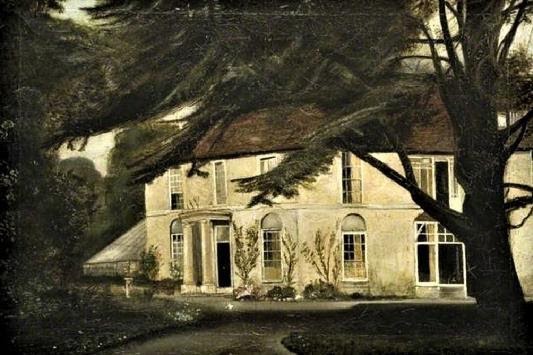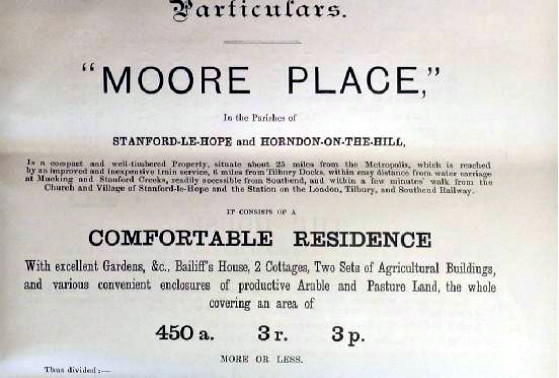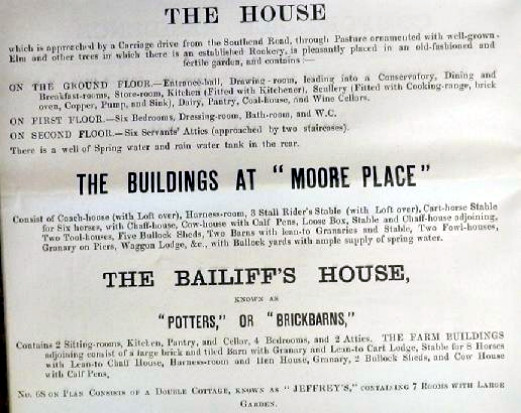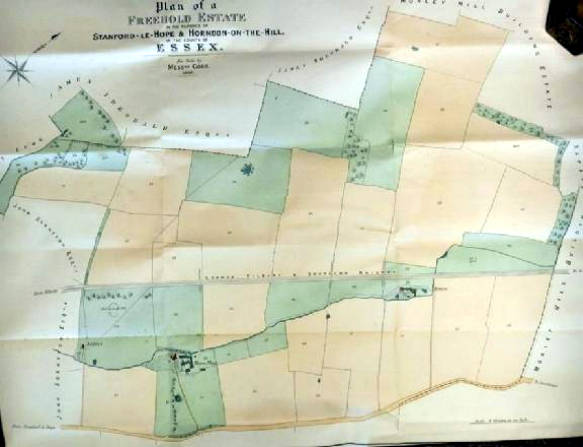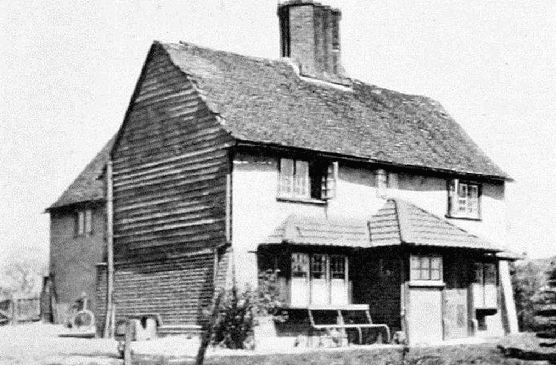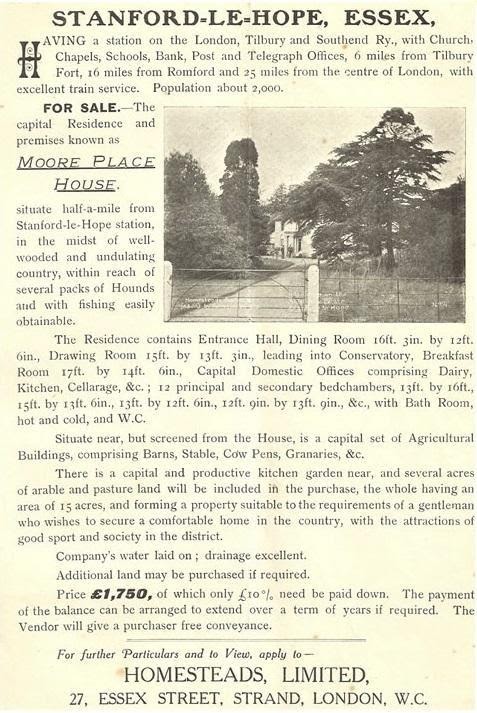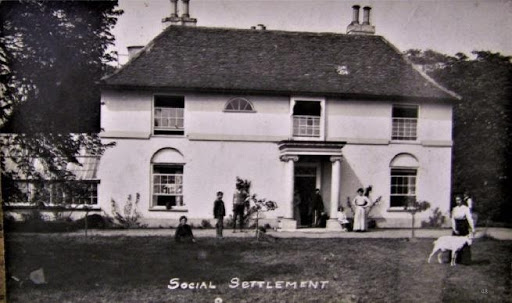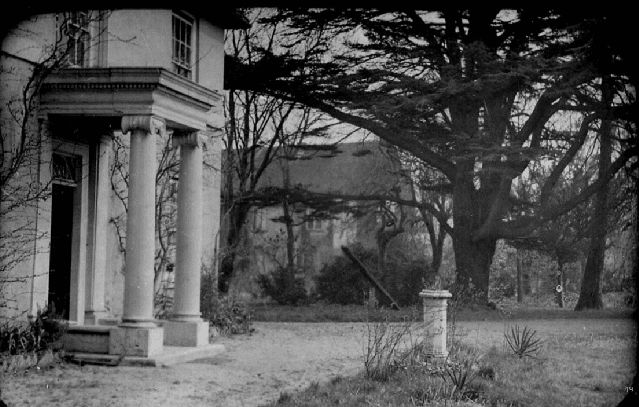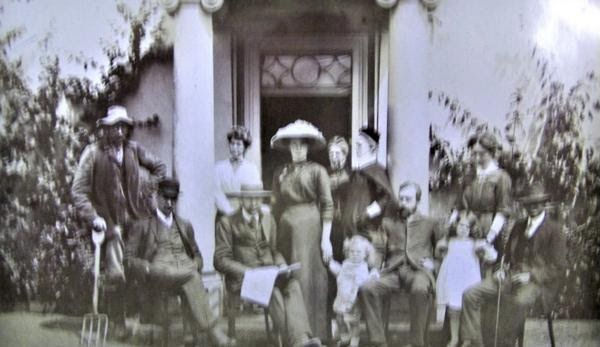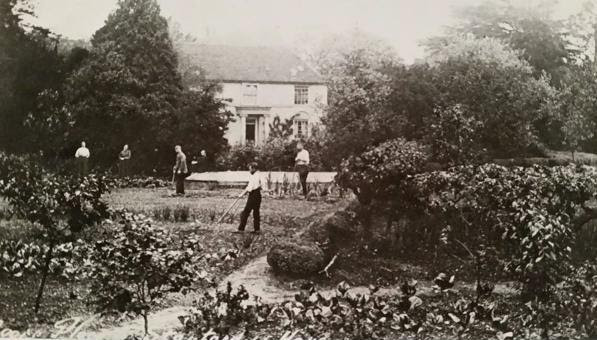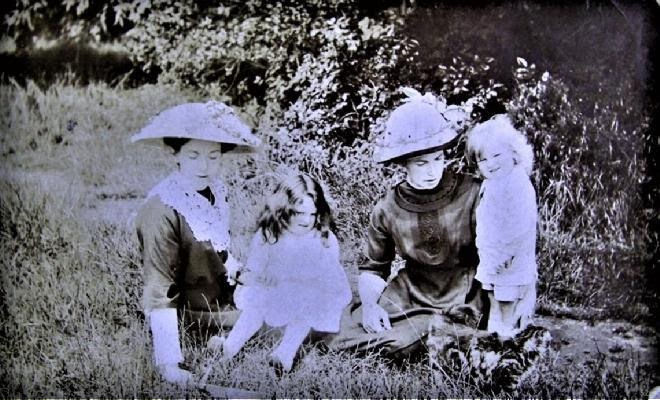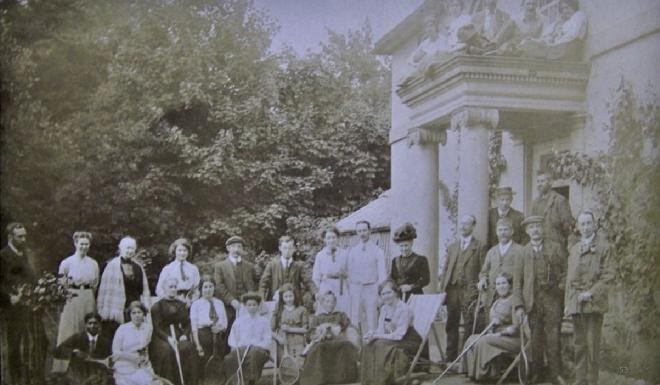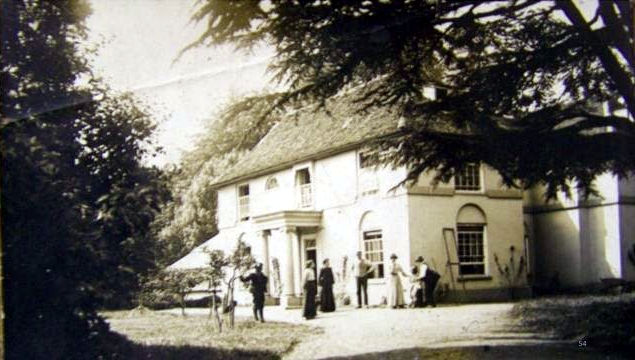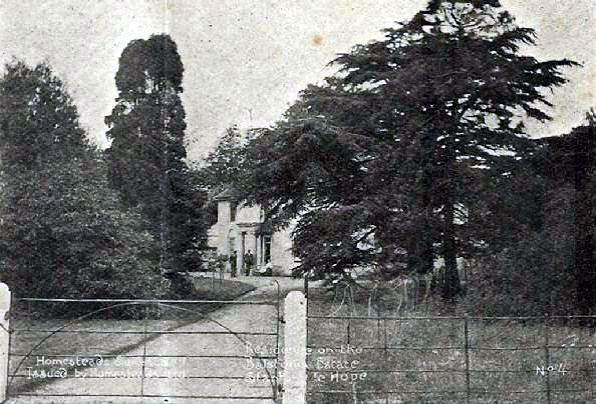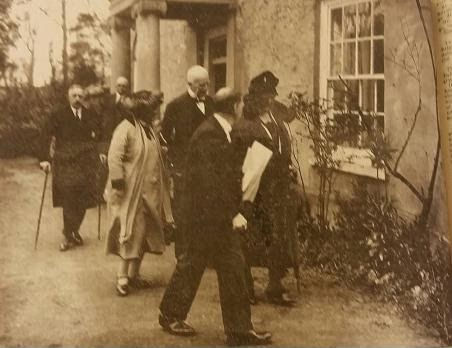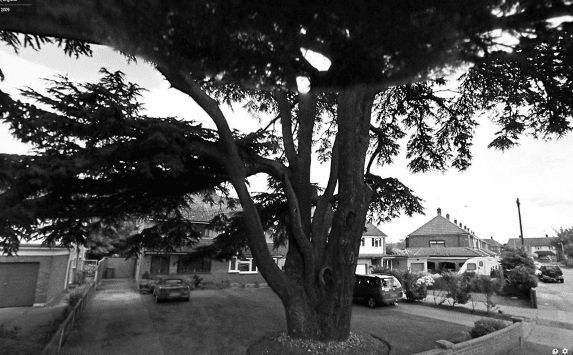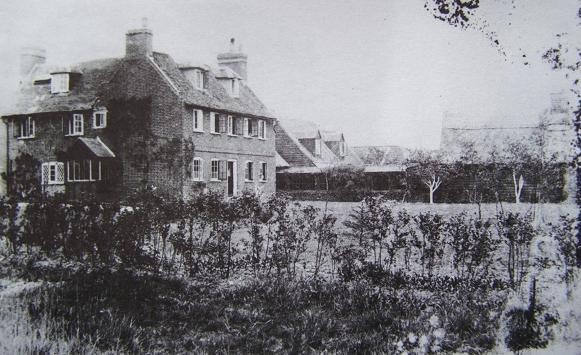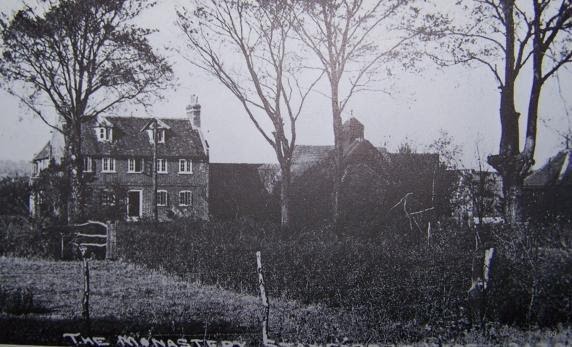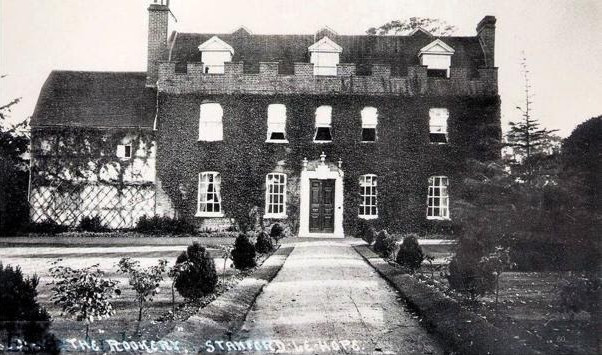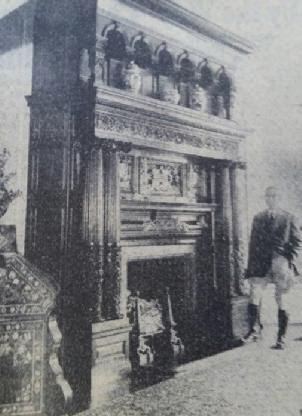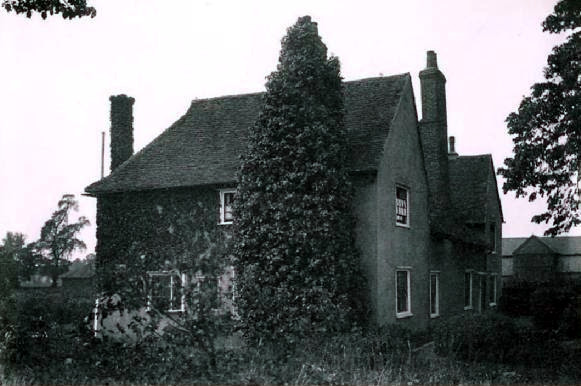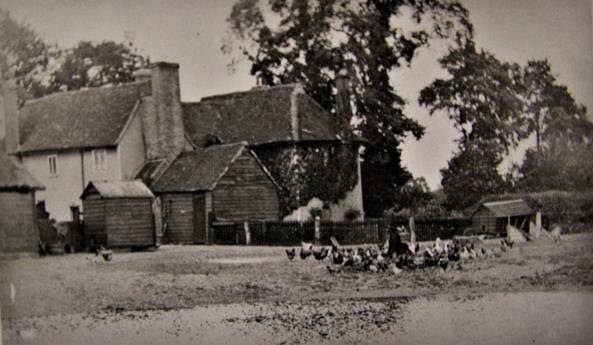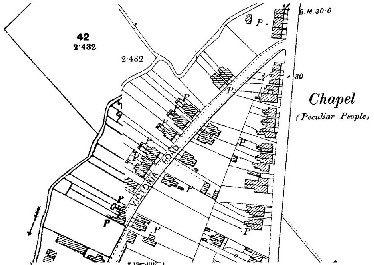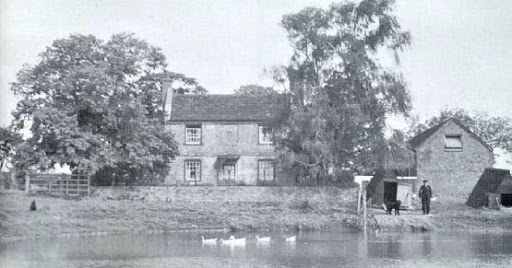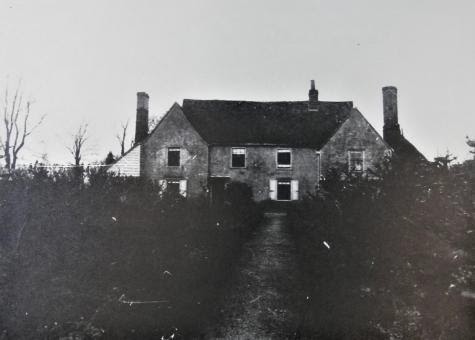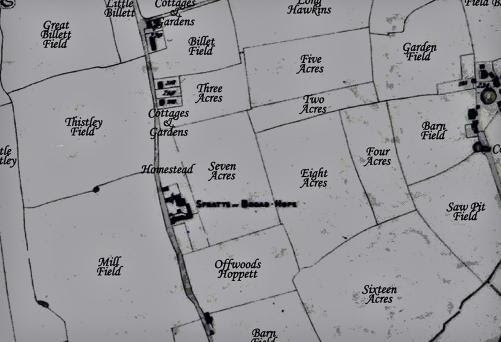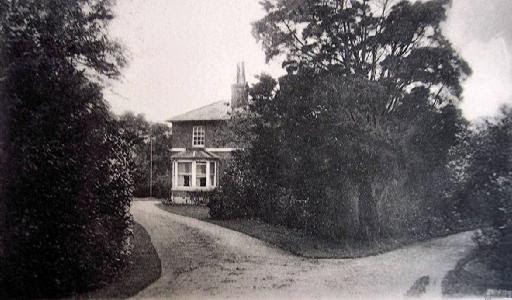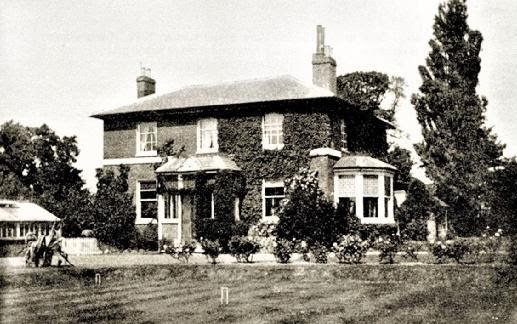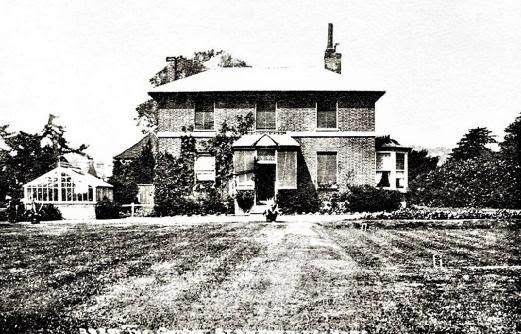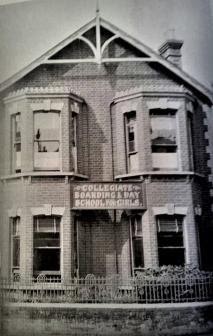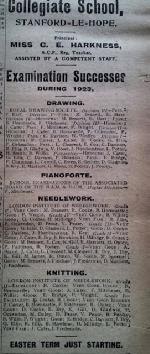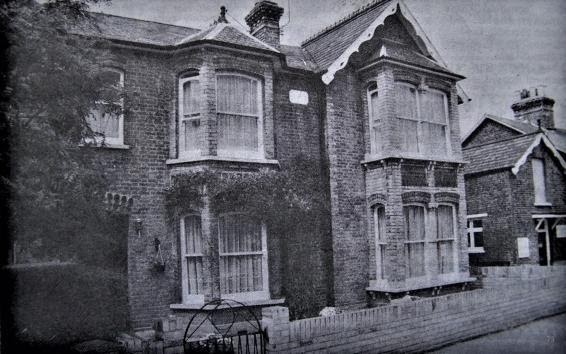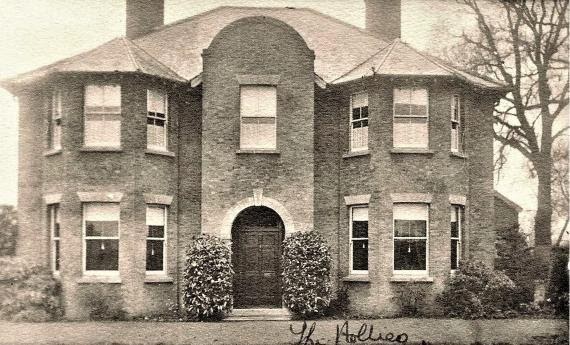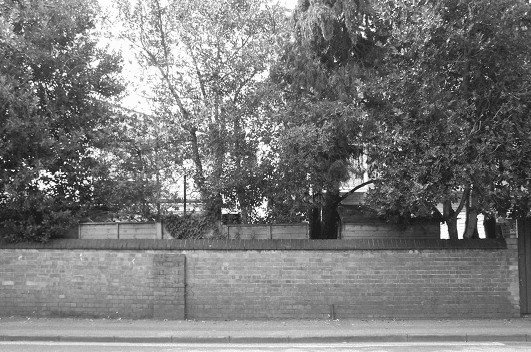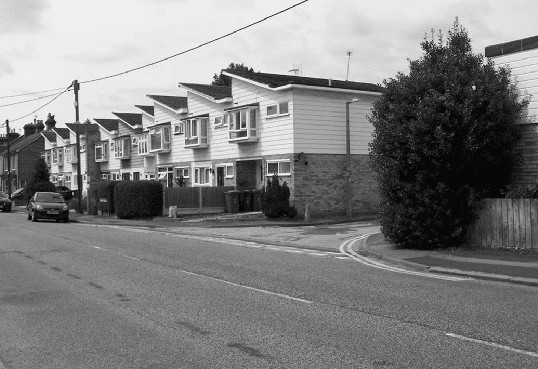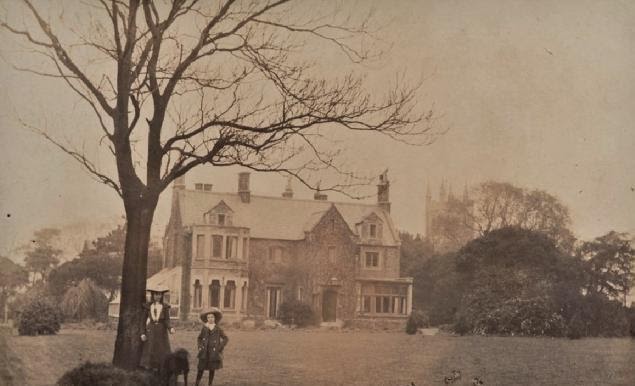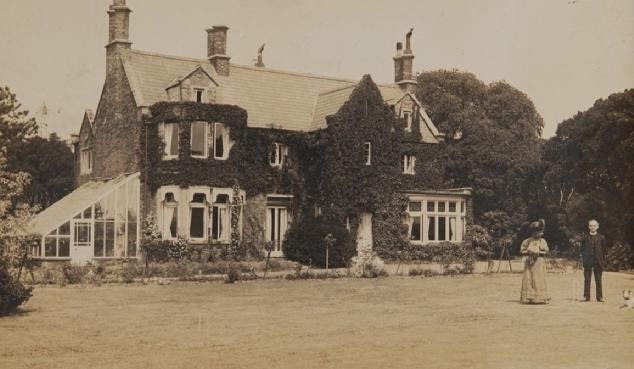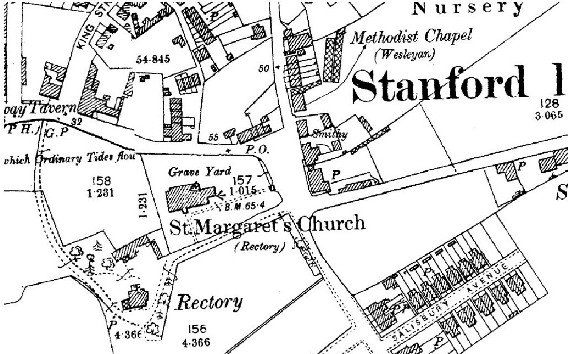Other Prominent Houses
Moore Place
Moore Place a painting by A.E.Roddam
It is probable that the original name of this house was Great Trapps as the Chapman and Andre map of 1777 shows a building of this name in the location of the later Moore Place. The 1740 tithe apportionment also includes buildings and farms known as Great Trapps and Little Trapps both in the tenancy of John Mayes. It is also probable that Little Trapps was the farm and house later known as Jeffery’s.
The tithe survey of 1840 names the house as Moore Place and in the possession of John Moore. The original Great Trapps is likely to have been demolished or radically rebuilt at around this time resulting in the house that we see in this painting.
The most interesting owner of Moore Place subsequent to John Moore was a limited company known as “Production for Use Industries” founded in 1909 by Captain James William Petavel with a group of his friends. James William Petavel was born in 1870 and educated with the intent of joining the navy although he eventually opted for an army career instead. He obtained a commission in the Royal Engineers and was sent to India where he was engaged on the commissioning of public works. He became critical of what he saw as the inefficient way in which the army was organised and on his retirement from the army in 1900 began to write a series of articles made self-supporting running engaged on this work rather farms than and factories with the men on purely military duties at appropriate points in their career.
“Production for Use” concept
Moore Place Cobb & Co sales prospectus 1888
Moore Place Estate Plan
This building is believed to be Little Trapps later Jefferys Farm
Homesteads Limited Sales Prospectus Moore Place House
Moore Place with 15 acres of land was purchased by Petavel and his colleagues for £1400.
The rest of the farmland associated with the house had already been sold to Homesteads Limited as part of their growing Balstonia estate. The social colony they founded promised a simple life based around self-sufficiency, vegetarianism, fresh air and stimulating conversation. There were some permanent colonists including of course Petavel with his wife and children but the associated guest house attracted relatively few visitors and efforts were made to attract more by advertisements extolling the virtues of the simple life.
In spite of the aim of the colony to become self sufficient, Production for Use, it could not ignore the financial reality of its situation and it gradually began to run into difficulties over the succeeding years. By 1913 Moore Place was offered for rental or possible sale. One interested party was a communist organisation based based in Cheshire but the sale did not materialise and Production for Use Industries were still in possession at Whitsun
1914 at the time one of the photographs shown here was taken.
Social Settlement at Moore Place
Moore Place Entrance Portico
Captain and Mrs Mabel Petavel with Colonists
Petavel expected to be called for military service at the outbreak of the First World War but actually he returned to India where he became the principal of a Polytechnic Institute. He died in 1945.
How long Production for Use Industries continued at Moore Place after Petavel’s departure is not known but in 1930 the house and grounds were purchased by the Wayfarer’s Benevolent Association who devoted themselves to the assistance of young vagrants.
Cultivation of the grounds at Moore Place
Mrs Mabel Petavel on the Right with her Youngest Daughter Ellen Miriam
Whitsun 1914
Another view of the house with some of the colonists gathered at the entrance. Note the cedar tree in the foreground
Another View of the Cedar Tree from the Homesteads sales Prospectus
Moore Place at the Opening of the Wayfarers Benevolent Association by Lord Henry Cavendish in Bentinck 1930
The Same Cedar Tree Now in a Front Garden in Second Avenue
The house itself could eventually no longer withstand the needs of an expanding population and being entirely surrounded by the Balstonia estate it finally succumbed to demolition in the early 1960s. What is left today? Only the cedar tree in a front garden in Second Avenue which is the subject of a preservation order. Moore Place stood between the modern Second Avenue and Redlie Close and was reached by a long track from Southend Road at the approximate position of Goldings Crescent.
Potters Farm
Lodge Hall Later Potters Farm
Potters Farm was a 16th century building and farm originally called Lodge Hall and appears under this name on the Chapman Andre Map of 1777 and the tithe apportionment of 1740. It was later occupied by James Potter and was subsequently named Potters Farm.
As we noted earlier it became part of the Moore Place estate as the bailiff’s house and had the alternative name of Brickbarns. By the early 20th century Potters Farm like so many others had become less viable and most of its land was sold as part of Moore Place for the development of the Balstonia housing estate.
In 1905 the house and its grounds were purchased from the Homesteads Company by a Franciscan order of monks the Society of the Divine Compassion which was founded by Henry Ernest Hardy and two colleagues James Adderley and Henry Chappel. Hardy had been studying theology at Keble College Oxford when the head of Oxford House, Arthur Winnington-Ingram, later Bishop of London and himself a graduate of Keble, visited the college seeking volunteers to work with the poor. Oxford House was situated in Bethnal Green and was dedicated to the assistance of the needy in the east end. Hardy accepted the invitation and went to Oxford House in 1891 where he became an administrator who also engaged in practical support of the poor. In 1894 he and his colleagues founded the Society and took vows of poverty, chastity and obedience. Hardy resumed his study of theology at Ely and was ordained a priest taking the name of Father Andrew. The Society based itself at St.Philip’s Church in Plaistow where Father Andrew remained its central figure until his death in 1946.
Potters Farm Subsequent to its Purchase by the Society of the Divine Compassion
The Society was supported by philanthropists and in the early 20th century sought a country retreat for its growing community. The Stanford area was at the time being vigorously promoted by land developers such as the Homesteads Company and the General Property Trust as a healthy, rural and peaceful location and it is likely that the Society heard about the area as a result of such promotion. The location had the added advantage of being readily accessible by train from the east end.
It was Father Andrew himself who appeared to make the choice of Potters Farm as a retreat. He seemed particularly attracted by the gardens. He wrote “An orchard has been planted and promises abundance; a vegetable garden also supplies the refectory table; the Stable has been converted into a chapel.” He wrote further “a sweet compelling sense of God’s presence kept me in the chapel all morning.” One can only imagine what a peaceful and serene location this must have been at the time. Father Andrew stayed at Potters Farm until 1907 when he returned to St.Philip’s. The black robed brethren were once a familiar sight in the village.
Potters Farm stood on the north side of Branksome Avenue at the current location of Hope Avenue with the Society remaining there until 1947.
New Jenkins, Later Adamsley; The Rookery; St.Clere’s Hall
New Jenkins, originally in the Parish of Mucking, was built in 1735 by James Adams, keeper of the Royal stables to King George III, although a house on the site had existed since the 16th century and was the home of the Gill family, keeper of the Royal lions. The Royal menagerie was housed at the Tower of London where a lion keeper’s house was built for William Gill in 1671.
At the time Adams carried out his building work, the Butts Farm house called Old Jenkins was already in existence a few hundred yards to the east on the Stanford village side of Butts Lane. James Adams died in 1765 and the house was subsequently renamed Adamsley. It had a number of owners in the succeeding years and was renamed again as The Rookery and later in 1934 to St.Clere’s Hall a name transferred by Mr William Wilson from a hall in East Tilbury. This original hall stood on land in the possession of Robert de Sancto Claro after the Norman Conquest.
St.Clere’s Hall is listed grade 2* by Historic England. The only building in the parish with the highest grade of I St.Margaret’s Church. James Adams has an elaborate and impressive tomb in the churchyard listed at grade 2.
St.Clere’s Hall over mantel with Mr.W.Wilson circa 1935. The mantel was purchased in 1932 and relocated from a Kent mansion
Ivy Walls Farm House
The original Ivy Walls was a 16th century farm house called Juyewall and its land was farmed by a succession of tenants over the years. As can be seen in this photo it had a generous covering of ivy to live up to its name.
As is well known, its most noted resident was the novelist Joseph Conrad who rented one half of the house from March 1897 to October 1898 with his first child Borys being born there in January 1898. Conrad and his wife Jessie who he had married in 1896 when he was 39 and she 22, had come to Stanford-le-Hope at the suggestion of their friends Mr and Mrs Hope who lived in Fairview Avenue. They found a newly built double fronted villa near the end of Victoria Road and moved in shortly after coming to the area. It is reasonably well known which house this was, but there is no documentation that establishes the identity beyond doubt. What is known is that it was on the right hand even numbered side of the road from the village end. Conrad thoroughly disliked the house calling it jerry built and within six months he and Jessie had moved to Ivy Walls.
Ivy Walls Farm Barn Field
When Joseph had to spend some time away from Ivy Walls Jessie often became fearful of the rowdy and licentious behaviour of the itinerant workers who camped out in Barn Field adjacent to her rooms particularly after Borys was born. There had been a major revolt of a group of pea pickers and a heated confrontation between the workers and the farmer took place with the result that Jessie locked herself into her rooms. The Conrads moved to Hythe in Kent on leaving Ivy walls in October 1898.
The original Ivy Walls house was demolished in the 1920s and replaced by the one that that stands today. The site of the former pond is still visible as a depression in the ground on the west side of Ivy Walls about 10 metres from the boundary fence line.
Victoria Road Street Plan 1897 Conrad’s House was One of Those Shown on this Map
On 5th September 2010 a green heritage plaque was unveiled by the Mayor of Thurrock Councillor Anne Cheale at the entrance to the Billet directly adjacent to Ivy Walls house commemorating Conrad’s association with Stanford-le-Hope in the presence of guests from the UK Joseph Conrad Society.
Great Garlands Farm House
Great Garlands was built in 1753 by Thomas Mashiter of Romford who was a considerable landowner throughout the area and who may have used it as a hunting lodge. The house was named Fox Hive in Chapman and Andre’s map of 1777. Investigations by the late Randal Bingley, an eminent local historian and author of many meticulously researched articles and books, have suggested that a much older wooden building based around an outhouse was the original Fox Hive or Fookes Heve as noted in a will of 1577. Mr Bingley suggests that this may have been associated with the name of Thomas Fakes who was noted in a fine of 1363
John Piers of Stanford on Thames, plaintiff Thomas Fakes of Stanford on Thames and Alice his wife, deforciant 1 messuage, and 1 acre of land in Stanford on Thames. PIaintiff and his heirs to hold of the chief lords. Consideration. 10 marks.
Great Garlands is situated on High Road and is listed grade 2 by Historic England.
Broadhope Farm House
Broadhope Farm was situated in Rainbow Lane and according to Reaney known as Broadhoppe in 1414. The house was demolished in 1896.
A letter dated March 1962 from the Essex County Archivist comments on this photograph as follows: “This appears to have been a really substantial timber framed house. The odds are that the original building was late mediaeval (post circa 1375) since there is no evidence of its being an aisled hall-house.” The letter goes on to state later “The roof levels rule out the possibility of the house being late Elizabethan or early 17th Century. This means that the house was mediaeval but altered in a great period of remodelling circa 1580 to 1640.” And later “The windows suggest another period of remodelling circa 1800. The lean to portion, which may be of almost any date, supports the opinion that the wing to the left of the front door was the service wing.”
Location of Broadhope Farm. The field known as Offwood’s Hoppett on this 1840 field map was named for Henry Offwood who farmed the land in the mid 19th century
The Grove
The Grove
The Grove
This impressive house, The Grove, still stands just off Wharf Road but is now divided into flats and no longer boasts a croquet lawn.
In 1920 it was the home of Alfred Courthope Adams, Managing Director of the Lathol Company and his wife Sabina who performed the unveiling ceremony of the War Memorial on Sunday 26th September 1920.
The Collegiate School
This imposing house still stands in Fairview Avenue. In 1887 it opened as the Collegiate School for Girls, the first principal being a Mrs. E. Worster. The school appeared to teach a variety of genteel subjects for the young ladies such as music, sewing and knitting in addition to the core subjects as the brochure from 1923 detailing some examination successes shows.
The Collegiate School Examination Successes
The pupils were mostly local, the daughters of farmers and local trades people but there were also a limited number of boarders from the London area.
The Collegiate School Stanford House
In 1923 the school relocated to Stanford House in Southend Road which again still stands and around this time it also began to admit boys. The principal at this time was a Miss Harkness who had taken over from Mrs.Worster. The building to the right in this photo, which again still stands and was until a few years ago a veterinary surgery, was used as an annexe where the infants were taught, the older children, up to the age of fifteen, were taught in the main house. In 1925 a Miss Lilian Arnold took over as the principal from Miss Harkness.
Shortly after the commencement of World War 2 Stanford House along with several other of the larger houses in the area, was requisitioned by the army and became the area HQ for the 11th City of London Yeomanry. Miss Arnold relocated the school to a semi- detached house in Scratton Road virtually opposite to the nursing and maternity home run by Miss Finn; Miss Grist; and Miss Ager. The collegiate school continued in Scratton Road until 1954 when Miss Arnold retired owing to ill health. She subsequently moved out of the area possibly returning to Swanage in Dorset from where she had originally hailed.
The Hollies
This attractive double bayed house stood in its own extensive grounds on the north corner of the junction of Wharf Road and Rectory Road and gave its name to the modern cul-de-sac that stands in its former location. It was the home of the village physician Dr Arthur Mercer and he had originally named it Drayton House as he moved to Stanford from his birthplace in 1835 of West Drayton in Middlesex.
The Former Doorway of The Hollies in 2019
These Dwellings Stand in the Former Garden of The Hollies
Stanford Rectory
Stanford Rectory 1908
Stanford Rectory 1912 with the Reverend James Russell and Mrs Emily Mary Russell
Location of Stanford Rectory from an 1897 Map
Built circa 1840 and replacing an earlier building, this rectory house was demolished circa 1960 and replaced by that which stands today.
